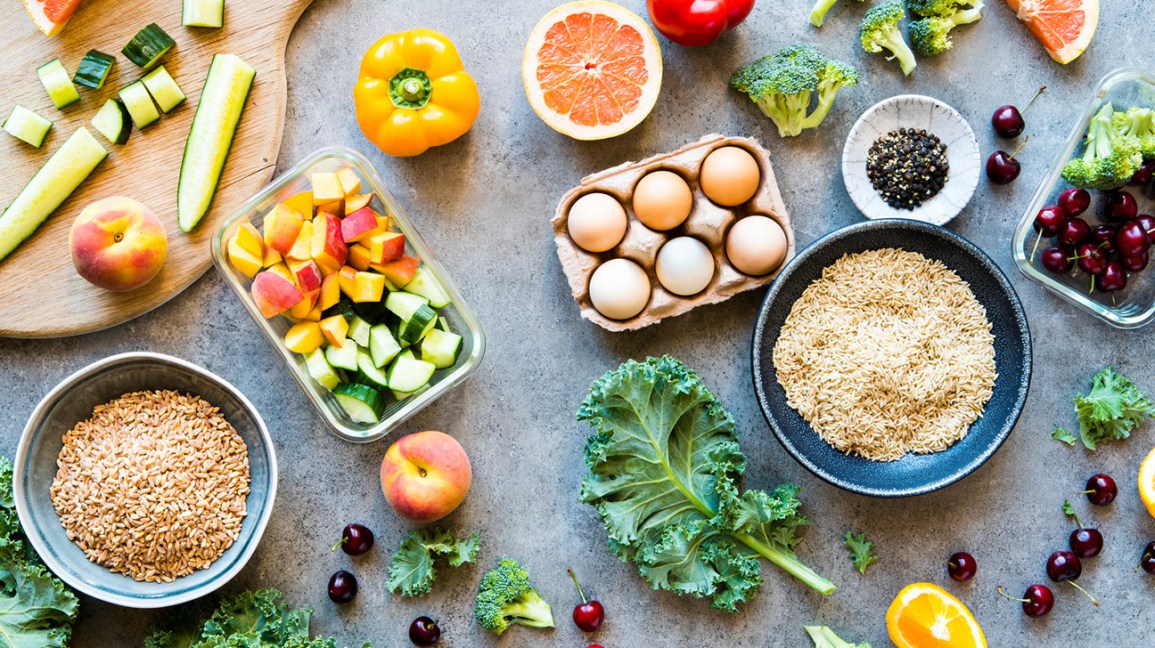
If you're looking for vegan recipes that are high in fiber, you've come to the right place. Fiber is an essential part of a plant-based diet and can help with many health issues. Here are some methods to increase your fiber intake. First, you must understand what fiber is and how it benefits your body.
Healthy plant-based diet
A diet high in fiber can reduce your risk of developing diabetes and cardiovascular disease. Fiber can improve gut health. Fiber is good for your digestive system, increasing the weight of your stool and making it easier to pass. Here are 20 foods high in fiber that are good for you.
A 2020 study found that a plant-based diet could help you lose weight. People on plant-based diets have lower body weight than those on standard Western diets. This is due to plant-based diets' high fiber content as well as the presence antioxidants, anti-inflammatory chemicals, and healthy oils.

Fiber-rich foods
Many vegetables and fruits are high fiber. Apples are one example. They can be added to smoothies, baked goods, and other foods. Broccoli is also an excellent source of fiber and has antioxidant polyphenols. Bananas are another great source of fiber. These can be added to smoothies or breads, muffins and ice-cream. A medium banana has about 3 grams fiber. A banana with less fiber will be more nutritious.
Fiber is important for your digestive system. Fiber should be a part of your daily diet. There are two types. Soluble fiber and insoluble fiber. Soluble fiber dissolves when water is added and is essential for good gut bacteria health. Insoluble fiber can also be found in vegetables and whole grain.
Increase fiber intake in your diet
The vegan diet is naturally low in fibre, but there are several ways to increase your fiber intake. One option is to eat a lot more whole grains. Wholegrains are high in fiber, as opposed to white bread, pasta, and other carbs. A second way to increase fiber is to include a variety fruits, vegetables and nuts with every meal.
Fiber helps our digestive system work properly and is essential for our health. It prevents diseases such as constipation and helps alleviate irritable bowel syndrome. It partially ferments within the gut to aid digestion. The best sources of fiber are wholegrain foods, unpeeled fruit, and dried fruit. It is important not to forget that fiber is only in plant foods.

Sources of fiber
Dietary fibers are found in many plant foods, including fruits, vegetables, whole grains, and nuts. These fibers are not found in animal products but they are extremely nutritious. Consuming whole grains, seeds, nuts and pulses will add fiber to a wide range of meals and snacks. A good source of fiber is also found in dried fruits.
Adding wheat bran to recipes is an easy way to boost your daily fiber intake. This grain is very high in fiber and can be added to smoothies, cereal, and baked goods. A tablespoon of wheat brän contains 6 grams of fiber. That is 21 percent more than your daily intake of fiber.
FAQ
What are 5 ways to live a healthy lifestyle?
What are 5 ways to live a healthy lifestyle?
Healthy living means eating right, exercising regularly and getting enough sleep. It also involves managing stress and having fun. Good eating habits include avoiding processed foods, sugar, unhealthy fats, and avoiding junk food. Exercise burns calories and strengthens the muscles. Sleeping well improves concentration and memory. Stress management can reduce anxiety and depression. Fun keeps us vibrant and young.
What is the working principle of an antibiotic?
Antibiotics are medications that kill harmful bacteria. Antibiotics are used for treating bacterial infections. There are many different types of antibiotics. Some can be taken orally while others can be injected. Others are topically applied.
Many people who have been exposed can be prescribed antibiotics. For example, if someone has had chicken pox, he or she might take an oral antibiotic to prevent shingles later on. A penicillin injection might be given to prevent pneumonia in someone who has had strep.
Children should not be given antibiotics without the consent of a doctor. Children are at greater risk than adults for developing serious side effects from taking antibiotics.
Diarrhea is the most common side effect from antibiotics. Other side effects possible include dizziness, nausea, vomiting, stomach cramps, stomach pains, dizziness and allergic reactions. These side effects typically disappear once treatment is complete.
What is the best diet for me?
There are many factors that influence the best diet, including your gender, age, weight, health condition, lifestyle, and personal preferences. It's also important to consider how much energy your exercise consumes, whether you prefer low-calorie meals, and if fruits and veggies are something you enjoy.
Intermittent fasting is a good option if you're trying to lose weight. Intermittent Fasting means that you eat only one meal per day and not three. This method may work better than traditional diets which include daily calorie counts.
Research suggests that intermittent fasting may increase insulin sensitivity and reduce inflammation. This can result in improved blood sugar levels as well as a lower risk of developing diabetes. Intermittent fasting has been shown to promote fat loss as well as improve overall body composition.
Statistics
- According to the Physical Activity Guidelines for Americans, we should strive for at least 150 minutes of moderate intensity activity each week (54Trusted Source Smoking, harmful use of drugs, and alcohol abuse can all seriously negatively affect your health. (healthline.com)
- In both adults and children, the intake of free sugars should be reduced to less than 10% of total energy intake. (who.int)
- This article received 11 testimonials and 86% of readers who voted found it helpful, earning it our reader-approved status. (wikihow.com)
- According to the 2020 Dietary Guidelines for Americans, a balanced diet high in fruits and vegetables, lean protein, low-fat dairy and whole grains is needed for optimal energy. (mayoclinichealthsystem.org)
External Links
How To
What does the meaning of "vitamin?"
Vitamins can be described as organic compounds found in food. Vitamins help us absorb nutrients in the foods we consume. Vitamins cannot come from the body so food must provide them.
There are two types vitamins: water soluble or fat soluble. Water-soluble vitamins dissolve quickly in water. These include vitamin C (thiamine), Vitamin B1 (riboflavin), Vitamin B2 (riboflavin), Vitamin B3 (niacin), Vitamin B6 (pyridoxine), Vitamin C, B1 (thiamine), Vitamin B2 (riboflavin), Vitamin B3 (niacin), and Vitamin B6 (pyridoxine). Fat-soluble vitamins are stored within the liver and in fatty tissue. Vitamin D, E, K and A are some examples.
Vitamins are classified according their biological activity. There are eight major types of vitamins.
-
A - essential for normal growth and maintenance of health.
-
C - important for proper nerve function and energy production.
-
D – Essential for healthy teeth, bones and joints
-
E is needed for good reproduction and vision.
-
K - required for healthy muscles and nerves.
-
P - vital for building strong bones andteeth.
-
Q - aids digestion, absorption and absorption iron
-
R - Required for red blood cell production
The recommended daily allowance (RDA), for vitamins, varies based on gender, age, and physical condition. The U.S. Food and Drug Administration, (FDA), sets the RDA value.
For adults over 19 years, the RDA is 400 mg per day for vitamin A. For fetal development, pregnant women require 600 micrograms per daily. Children ages 1-8 require 900 micrograms per day. Children under 1 year old require 700 micrograms daily, while infants over one year old need 500 micrograms every day. This decreases between 9 and 12 months.
Children ages 1-18years who are obese need 800 micrograms per day while those who are overweight need 1000 micrograms per day and children who are underweight need 1200 micrograms per day to meet their nutritional needs.
Children aged 4-8 years old who have been diagnosed as having anemia require 2200 micrograms of vitamin C per day.
2000 micrograms is the minimum daily intake for general health in adults older than 50 years. Women who are pregnant or breastfeeding need 3000 micrograms per day due to increased nutrient requirements.
Adults over 70 years of age need 1500 micrograms per day since they lose about 10% of their muscle mass each decade.
Women who have been pregnant or are lactating require more than the RDA. Pregnant woman need 4000 micrograms daily in pregnancy and 2500 per day after childbirth. Breastfeeding mothers need 5000 micrograms per day when breast milk is being produced.